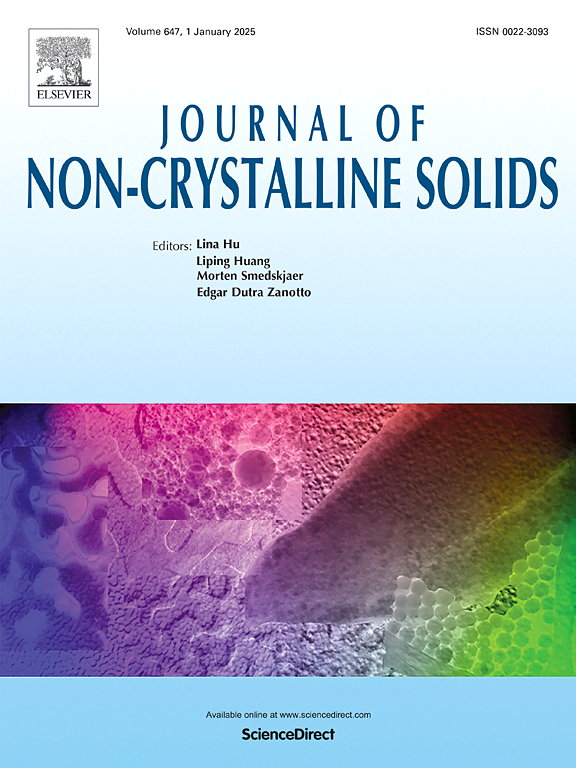电子束蒸发法制备太阳能电池用(CdO)1-x(ZnO)x薄膜及其物理性质
IF 3.2
3区 材料科学
Q1 MATERIALS SCIENCE, CERAMICS
引用次数: 0
摘要
采用电子束蒸发(EBE)方法在玻璃基底上沉积了 (CdO)1-x(ZnO)x 薄膜。X 射线衍射方法显示薄膜具有 CdO 的多晶结构。随着氧化锌含量的增加,峰值强度降低,半最大值全宽(FWHM)增加。因此,峰值向右移动。结果还显示,纯氧化锌发生了向无序区的相变。利用 FE-SEM 和原子力显微镜分析确定了随着氧化锌浓度的增加,颗粒尺寸的减小情况。随着氧化锌浓度的增加,光学能隙也随之增加,同时平均折射率和消光系数也增加了。电阻率从 x = 0 时的 1622 Ωcm 下降到 x = 0.5 时的 86 Ωcm,然后又上升到 x = 1 时的 2188 Ωcm。这些薄膜具有许多不同的物理特性。这些数据表明,它们有可能用于某些光电设备,其中特别涉及到电荷载流子和光吸收之间不可避免的相互联系,这是固体/化合物应用于太阳能电池和光电探测器的一个非常有说服力的理由。本文章由计算机程序翻译,如有差异,请以英文原文为准。
Synthesis and physical properties of (CdO)1-x(ZnO)x thin films obtained by electron beam evaporation for solar cell application
The electron beam evaporation (EBE) method was used to deposit (CdO)1-x(ZnO)x films on glass substrates. X-ray diffraction methods revealed the films to have a polycrystalline structure for CdO. The intensity of the peaks decreased and the full width at half maximum (FWHM) increased with growth in the ZnO content. Thus, the peaks shifted to the right. Also, the results showed that for the pure ZnO, the phase transition to the disordered region occurred. FE-SEM and AFM analysis were utilized for the determination of the reduction in particle size as the concentration of ZnO was increased. With increased ZnO concentrations, the optical energy gap increased, accompanied by increases in both the average refractive index and extinction coefficient. Electrical resistivity reduced from 1622 Ωcm at x = 0 to 86 Ωcm at x = 0.5 and then increased to 2188 Ωcm at x = 1. These thin films have a lot of different physical properties. This data points out their possible utilization in some optoelectronic devices, which specifically involves the inevitable interconnectivity of charge carriers and light absorption, which is a very convincing reason for solid/compound for the solar cell and photodetector applications.
求助全文
通过发布文献求助,成功后即可免费获取论文全文。
去求助
来源期刊

Journal of Non-crystalline Solids
工程技术-材料科学:硅酸盐
CiteScore
6.50
自引率
11.40%
发文量
576
审稿时长
35 days
期刊介绍:
The Journal of Non-Crystalline Solids publishes review articles, research papers, and Letters to the Editor on amorphous and glassy materials, including inorganic, organic, polymeric, hybrid and metallic systems. Papers on partially glassy materials, such as glass-ceramics and glass-matrix composites, and papers involving the liquid state are also included in so far as the properties of the liquid are relevant for the formation of the solid.
In all cases the papers must demonstrate both novelty and importance to the field, by way of significant advances in understanding or application of non-crystalline solids; in the case of Letters, a compelling case must also be made for expedited handling.
 求助内容:
求助内容: 应助结果提醒方式:
应助结果提醒方式:


